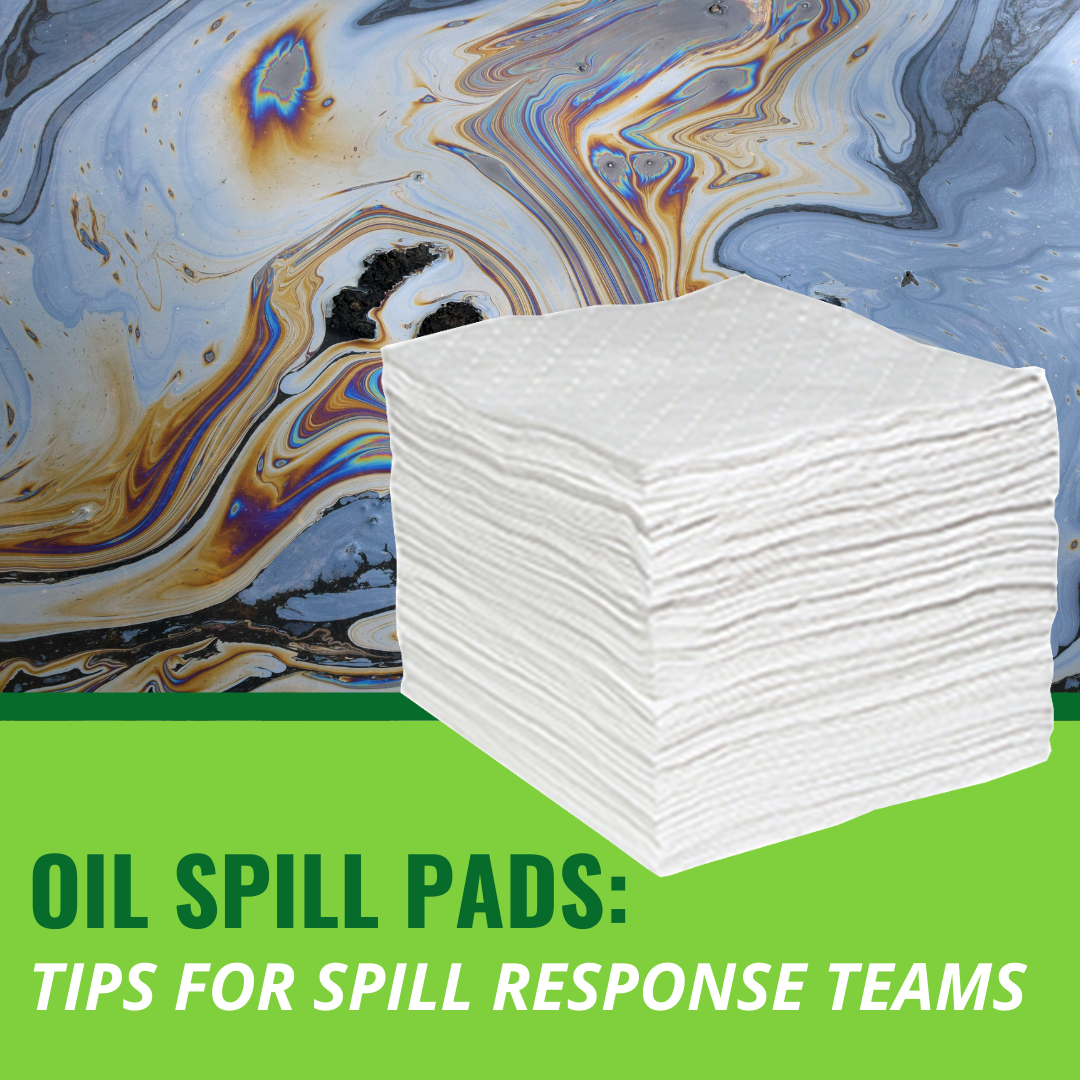We use cookies to make your experience better. To comply with the new e-Privacy directive, we need to ask for your consent to set the cookies. Learn more.
Oil Spill Pads: Tips for Spill Response Teams
Oil spills are hazardous — and while oil doesn’t present the same immediate threat as battery acids or other industrial liquids, oil can certainly damage equipment and create serious slip-and-fall hazards. Oils can also create serious fire and explosive risks. Of course, most industrial businesses deal with large quantities of oil on a regular basis, and spills are practically inevitable.

By spending some time on spill response preparation, you can ensure that all spills are contained efficiently and safely. Proper outfitting can make this process much easier — including oil spill pads designed specifically for this unique hazard. Below, we’ll address some tactics for managing spill response and provide a few recommendations for limiting clean-up times while reducing risks.
Create an appropriate spill response strategy for your operation.
All operations will eventually encounter spills. Even with careful planning and proper equipment maintenance, accidents happen. Every facility will have a slightly different spill response plan, as layout and other factors can play a role in containment. With that said, most plans follow the same basic approach.
Start by assessing the risk.
All spill responses should begin with a risk assessment. Train workers to stop, look, listen, and analyze their surroundings. Proper training can prevent personnel from rushing into a dangerous situation and prevent minor mistakes that impede an effective spill response.
Remember, oil spill response requires proper personal protective equipment (PPE). Disposable gloves, chemical aprons, and other basic supplies should be provided by the employer — placing these items near likely spill sites (such as oil drum storage areas) can speed up cleanup times significantly. When you’re dealing with a significant oil spill, every second counts, so outfit your facility appropriately.
Choose the right oil spill pads for an effective response.
Minor spills and leaks can be addressed with basic oil spill pads and rolls, but make sure personnel have access to a variety of cleanup supplies. Larger spills need to be quickly contained (as we’ll discuss in a moment), and the right absorbent pads will make this process much easier.
Most oil absorbent pads are made with polypropylene, a thermoplastic polymer that repels water and attracts oils. In other words, standard shop towels won’t cut it — use the right materials for the job.
Options include:
- Oil Selective Bonded Pads and Oil Selective Rolls - A bale of oil-selective bonded pads can absorb up to 29 gallons of oil. Ideal for minor spills and leaks, pads and rolls should be stored in easily accessible locations throughout a facility.
- Oil Selective Net Booms - Commonly used to absorb oil on the surface of water, net booms float without shedding. They can be linked to form an absorbent barrier. For spills on land, net booms can be used similarly to oil selective socks (discussed below), creating a barrier around the spill.
- Oil Selective Pillows and Oil Selective Socks - Socks can be molded to any shape, and they’re excellent for creating a perimeter around a larger spill. A case of propylene socks can absorb up to 25 gallons of oil. Pillows are used for cleaning up large oil spills, containing leaks, or for simplifying cleanup in drip pans; a case absorbs up to 30 gallons.
- Oil Selective Spill Kits - Spill kits are a comprehensive solution for oil cleanup. Available in a variety of sizes, oil selective spill kits contain pads, pillows, socks, disposal bags, and a liquid & oil sorbent that acts as a traction agent. Provided in highly visible bright-yellow containers.
Have a process in place for replenishing oil spill pads and other supplies after they’re used. Remember, investing in cleanup response can save your operation a tremendous amount of money in the long run (and prevent spills from endangering workers and equipment).
Keep the spill contained and begin cleanup.
Using the appropriate supplies, keep the spill within a perimeter. Dike or dam the perimeter with oil-selective socks and pillows. If oil leaks under equipment, make sure to consider the space under the equipment as part of the perimeter. For larger spills, absorbent granules may provide faster containment than oil spill pads, but both types of materials will be necessary in your response.
Set up warning cones or other visible markers to identify the hazard. Try to keep the area isolated during spill response — even if other workers have spill response training, they should not enter the containment zone if they’re not actively working to clean the spilled oil (and wearing appropriate PPE). Use traction agents to reduce slip hazards for the cleanup crew.
Make sure to properly dispose of all sorbents, pads, and debris. Disposal methods may vary depending on state regulations, liquid type, and other factors, but set clear processes for disposal in your spill response plan.
Take appropriate steps to prevent spills from occurring.
Most operations have a process for reporting spills (and spill cleanup efforts). Make sure that these reports have enough detail to be useful; accurate reporting can help you find ways to improve response times and prevent similar incidents from occurring.
Ensure that liquid containers are stored properly — not too far towards the front of a shelf. Wherever possible, the openings of the containers should be on top of the container. Consider using drum top pads to prevent leaks from turning into slip-and-fall hazards. Solus Group’s Oil Selective Fine Fiber Drum Top Pads are made with 100% polypropylene, and they’re pre-cut to fit 55-gallon drums. They’re engineered for superior traction, even when saturated, and they’re essential for keeping drum storage areas clean and safe.
Remember, if you’re outfitting a new facility, Solus Group can help: Contact our team at 314.696.0200 to discuss your operation’s needs.
